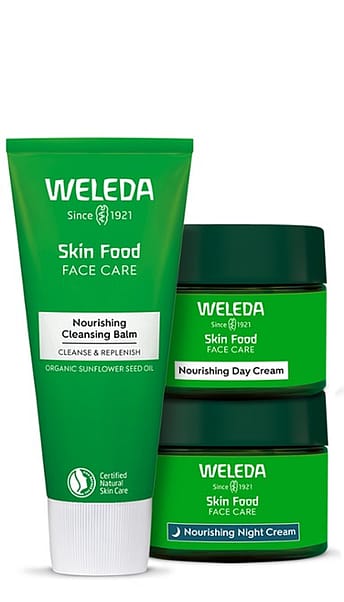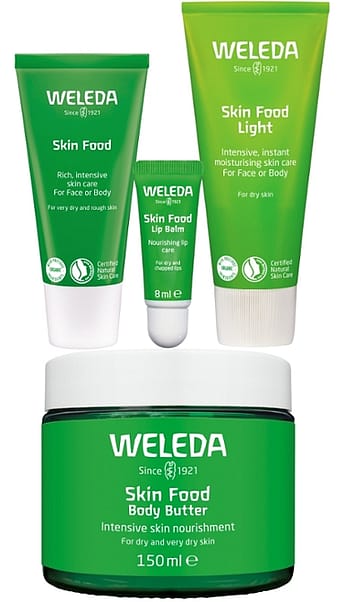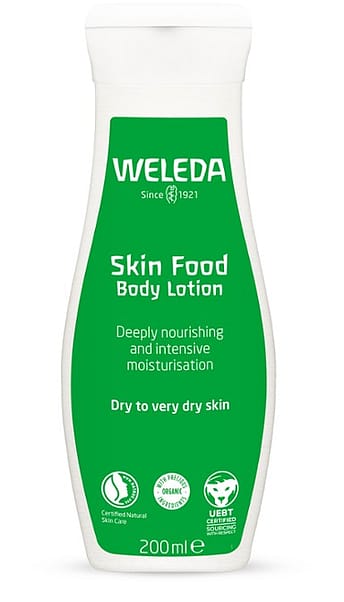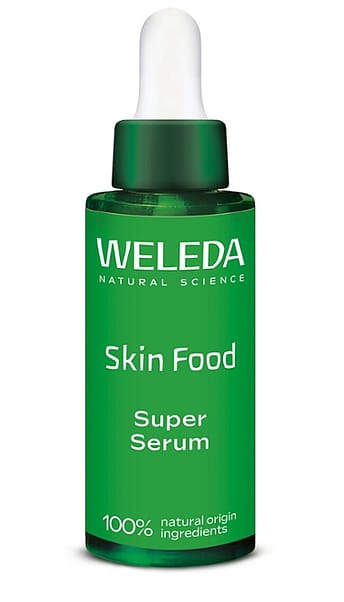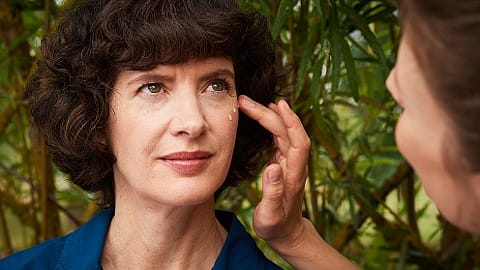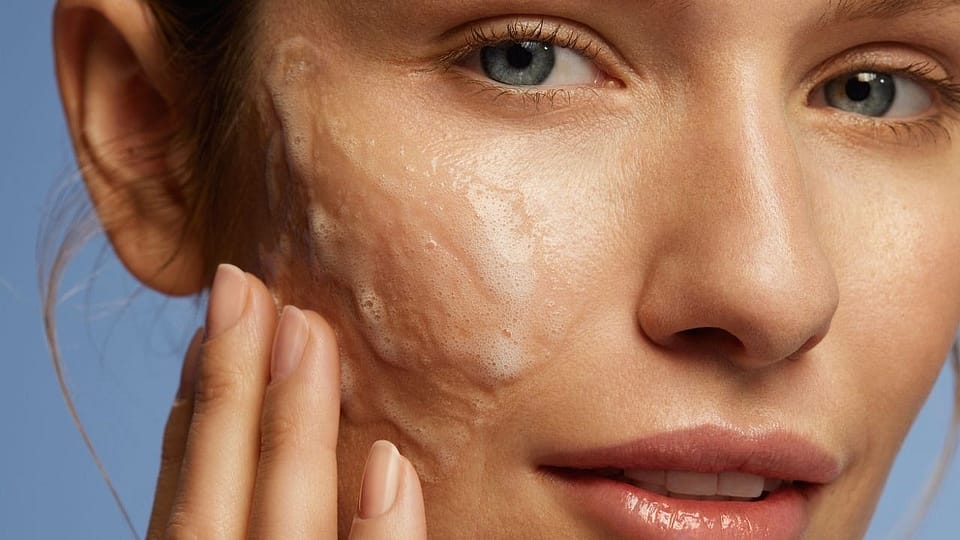Causes of Dry Skin and How to Identify Them: A Natural Perspective
Dry skin is more than a mere inconvenience—it's often your body's way of communicating deeper imbalances. At Weleda, our century of experience in natural skincare has taught us that understanding the root causes of dry skin is essential for restoring your skin's natural harmony. In this guide, we'll explore the various factors that contribute to dry skin and how to recognize the signs that your skin is calling for more nourishment.
The Skin's Natural Balance: Understanding Your Protective Shield
Your skin is a remarkable organ with an innate wisdom. The outermost layer, known as the stratum corneum, functions as your body's protective barrier. This delicate barrier contains natural lipids (oils) that seal in moisture and protect against environmental stressors. When these natural oils become depleted or disrupted, dry skin can result.
The skin's moisture balance depends on several factors:
- Natural moisturising factor (NMF) - compounds that attract and hold water
- Skin barrier lipids - that prevent excessive water loss
- Sebum production - your skin's natural oil that helps maintain hydration
- Cell turnover rate - the process of shedding old skin cells and generating new ones
When any of these elements fall out of balance, the skin begins to show signs of dryness. Understanding what disrupts this delicate balance helps us address the root causes rather than merely treating symptoms.
External Causes of Dry Skin
Environmental Factors
The world around us can significantly impact our skin's moisture levels:
Seasonal Changes: Winter months often bring lower humidity levels and harsh winds that can strip the skin of its natural oils. Many people notice their skin becoming drier as temperatures drop and heating systems come on, further reducing indoor humidity.
Climate: Living in arid or low-humidity environments naturally challenges the skin's ability to maintain moisture. Desert climates, high altitudes, and areas with extreme temperature variations can be particularly challenging for maintaining skin hydration.
Sun Exposure: While sunlight provides vital vitamin D, excessive exposure can damage the skin's protective barrier. The sun's rays break down essential skin lipids and proteins, leading to moisture loss and accelerated aging. This is why sun-exposed areas like the face, neck, and hands often show dryness first.
Pollution: Environmental pollutants can compromise the skin barrier and trigger inflammatory responses that disrupt normal skin function. Urban environments with higher pollution levels can contribute to chronic dryness and sensitivity.
Daily Habits That Deplete Moisture
Our daily routines often contain practices that unknowingly contribute to dry skin:
Bathing Practices: Hot showers and baths feel wonderful, especially in cold weather, but they can significantly strip your skin of its natural oils. Extended time in water, particularly hot water, dissolves the lipid barrier that keeps moisture locked in.
Harsh Cleansers: Many conventional soaps and cleansers contain strong surfactants that disrupt the skin's acid mantle and remove natural oils. Products containing sodium lauryl sulfate and other aggressive cleansing agents can leave skin feeling tight and dry after washing.
Excessive Exfoliation: While removing dead skin cells is beneficial, over-exfoliating can damage the skin barrier and trigger inflammation. Physical scrubs, chemical exfoliants, and cleansing brushes used too frequently or aggressively can compromise skin health.
Swimming: Regular exposure to chlorinated pool water or salt water without proper post-swim care can contribute to chronic dryness. Both chlorine and salt have drying effects that can persist if not addressed through proper cleansing and moisturizing.
Internal Factors Affecting Skin Hydration
Physiological Considerations
Our internal environments play equally important roles in skin hydration:
Age-Related Changes: As we journey through life, our skin naturally produces less oil. After age 40, sebum production typically decreases, with the decline accelerating during and after menopause for women. This natural process means mature skin requires different care approaches than younger skin.
Genetic Predisposition: Some people are naturally inclined toward drier skin due to their genetic makeup. If your parents or grandparents had dry skin, you may have inherited this tendency. Certain ethnic backgrounds are also more prone to specific skin conditions associated with dryness.
Hormonal Fluctuations: Changes in hormone levels—whether due to menstrual cycles, pregnancy, menopause, or certain medical conditions—can significantly impact skin hydration. Estrogen, in particular, plays a crucial role in maintaining skin moisture, elasticity, and thickness.
Health Considerations
Hydration Status: When your body lacks adequate water, your skin reflects this deficiency. Internal dehydration manifests as external dryness, with the body prioritizing water for essential organ functions over skin hydration.
Nutritional Deficiencies: Your skin requires specific nutrients to maintain its barrier function. Deficiencies in essential fatty acids (especially omega-3s and omega-6s), vitamins A, C, E, and certain B vitamins can manifest as dry, flaky skin.
Medical Conditions: Certain health conditions can cause or exacerbate dry skin. These include:
- Atopic dermatitis (eczema)
- Psoriasis
- Thyroid disorders (particularly hypothyroidism)
- Diabetes
- Kidney disease
Medications: Many common medications list dry skin as a potential side effect. These include:
- Diuretics
- Statins (cholesterol-lowering drugs)
- Retinoids
- Antihistamines
- Certain blood pressure medications
Recognising the Signs: How to Identify Dry Skin
Dry skin manifests through various signals that go beyond mere appearance. Learning to read these signs helps you respond appropriately to your skin's needs.
Visual Indicators
Flakiness or scaling: Visible flakes or a fine, powdery appearance, particularly noticeable on darker skin tones
Roughness: Skin texture that feels uneven or coarse to the touch
Fine lines and cracks: Tiny lines that may appear more pronounced, especially around the eyes and mouth
Dullness: A lack of radiance or natural glow
Redness: Particularly in fair skin tones, dryness can trigger inflammatory responses
Sensory Signals
Tightness: A sensation that the skin is being pulled, especially after cleansing
Itchiness: Ranging from mild to intense, often worsening at night
Stinging or burning: Particularly when applying products that never caused discomfort before
Increased sensitivity: Products and environmental factors that never bothered your skin before may suddenly cause reactions
Behavioral Patterns
Seasonal changes: Noticing that your skin becomes significantly drier during certain seasons (typically winter)
Response to environments: Experiencing increased dryness in low-humidity settings like airplanes, air-conditioned rooms, or heated indoor spaces
Product reactions: Finding that your usual skincare products no longer provide adequate hydration
Understanding Dry Skin Locations: What They Tell Us
The location of dry skin on your body can provide important clues about its causes:
Facial Dryness: Often related to exposure to environmental factors, improper cleansing routines, or reaction to facial products. The delicate skin on the face has fewer oil glands than other body areas, making it particularly vulnerable to dryness.
Hand Dryness: Frequently linked to excessive hand washing, exposure to harsh chemicals, or occupational factors. The skin on our hands has fewer oil glands and is constantly exposed to drying activities.
Body Dryness: May indicate environmental factors, bathing habits, or internal health considerations. Different body regions have varying levels of oil gland activity, with the lower legs often being particularly prone to dryness.
Localized Patches: Could suggest contact dermatitis or an inflammatory skin condition. When dryness appears in specific, well-defined areas, it often indicates an external trigger or localized condition rather than general dryness.
Natural Approaches to Understanding Your Skin
At Weleda, we believe in observing and working with nature rather than against it. This philosophy extends to understanding your skin's natural rhythms and needs:
Seasonal Awareness: Just as nature changes through the seasons, your skin's needs will vary throughout the year. Pay attention to how your skin responds to seasonal transitions and adjust your care accordingly.
Holistic Observation: Rather than focusing solely on external symptoms, consider the whole picture of your health and lifestyle. Sleep quality, stress levels, diet, and emotional wellbeing all impact skin health.
Gentle Investigation: When trying to identify causes of dryness, make changes one at a time. This patient approach allows you to clearly observe how your skin responds to each modification.
Conclusion: Listen to Your Skin
Understanding the causes of dry skin is the first step toward restoring balance and vitality. By recognising the various factors that contribute to dryness—whether environmental, lifestyle-related, or internal—you can make informed choices about your skincare routine and overall wellbeing.
Remember that your skin is a dynamic, living organ with its own innate intelligence. When you approach dry skin with respect for its needs, you create the conditions for true healing and balance to emerge.
For a comprehensive approach to treating dry skin once you've identified the causes, explore our complete guide to Understanding and Treating Dry Skin, where you'll discover natural solutions for restoring your skin's moisture balance.
Looking for immediate relief for your dry skin? Discover Weleda's iconic Skin Food range, formulated with biodynamic herbs to provide intense nourishment exactly where your skin needs it most.








